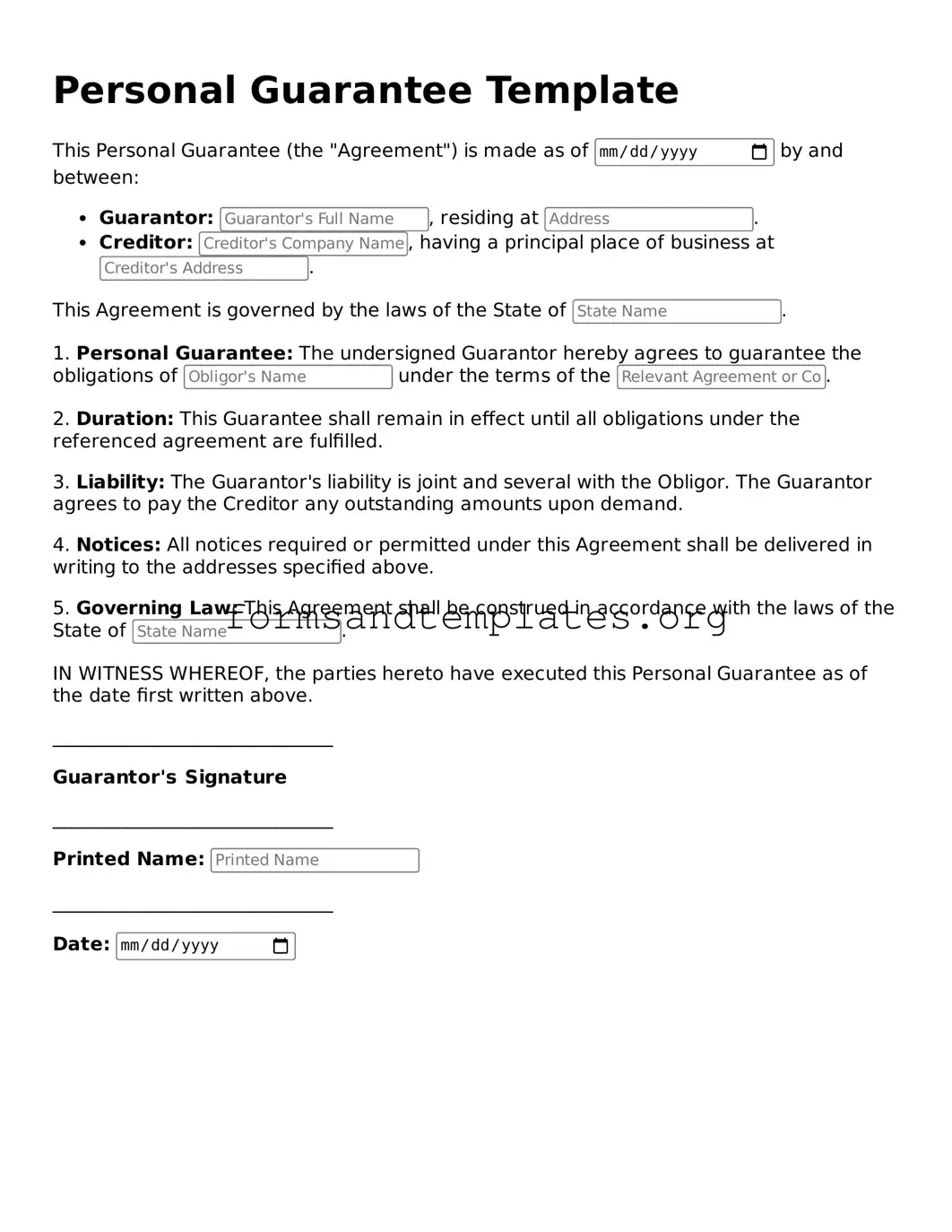Attorney-Verified Personal Guarantee Template
A Personal Guarantee form is a legal document that holds an individual personally responsible for the debts or obligations of a business. This form is often used by lenders to secure loans, ensuring that they have a way to recover their funds if the business fails to pay. If you need to fill out this form, click the button below to get started.
Access Editor Here
